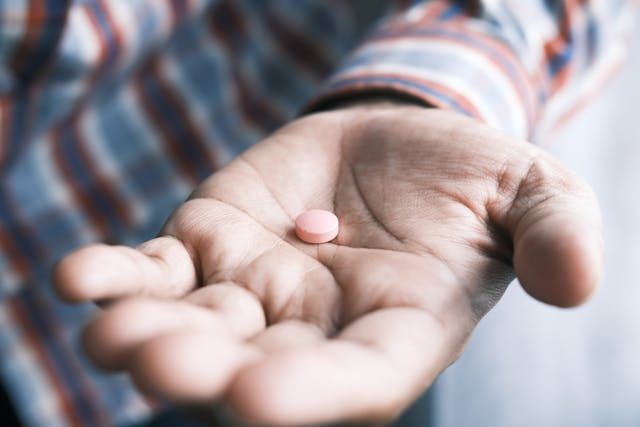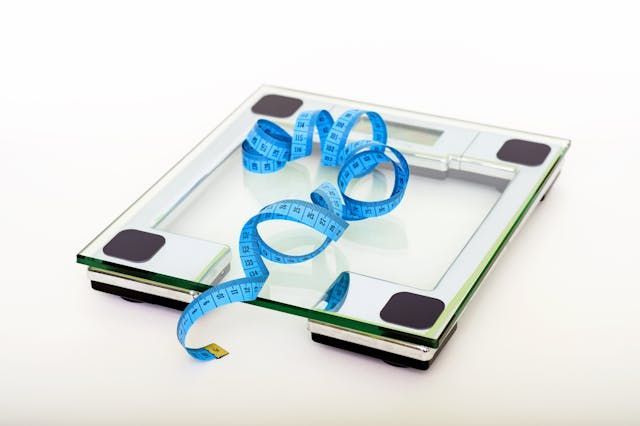Your Solution to Fainting, Fuzzy Thinking and Fatigue

Introduction:
Have you ever found yourself battling unrelenting fatigue, experiencing bouts of dizziness, and wondering why your energy seems to have abandoned you? It's a scenario that many face, and often, it can be attributed to a group of silent culprits: anemias.
Iron deficiency anemia, vitamin deficiency anemia, and hemolytic anemia—are the three major players in the world of fatigue and dizziness. Each one has its unique symptoms, but they all share a common thread of leaving you feeling drained and lightheaded. In this blog, we'll uncover the mysteries behind these anemia types, understand their telltale signs, and explore how to reclaim your vitality.
Listen as Dr. Plank discusses this topic on Spotify
Common Symptoms of Anemia
Anemias can share some common symptoms, but the specific symptoms can vary depending on the type of anemia and its underlying causes. Here, we'll outline the general symptoms of anemia and mention some symptoms that are more specific to certain types of anemia.
Here are the Common Symptoms of Anemia:
1. Fatigue: Persistent and unexplained fatigue is a hallmark symptom of anemia. It can range from mild to severe and often interferes with daily activities.
2. Weakness: Anemic individuals may feel physically weak and unable to perform tasks that were once manageable.
3. Pale Skin: Paleness of the skin, particularly noticeable in the face and palms, is a common sign of anemia. This paleness is due to decreased red blood cell production and reduced oxygen-carrying capacity.
4. Shortness of Breath: Anemia can lead to a reduced supply of oxygen to body tissues, resulting in shortness of breath, especially during physical activity.
5. Dizziness or Lightheadedness: Anemic individuals may experience dizziness or a feeling of lightheadedness, particularly when standing up quickly.
6. Headaches: Anemia can cause headaches, which are often described as dull and persistent.
7. Cold Hands and Feet: Poor circulation, often associated with anemia, can lead to cold extremities.
8. Cognitive Difficulties: Some individuals with anemia may experience difficulty concentrating, memory problems, or mental fogginess.
9. Brittle Nails and Hair: Anemia can affect the health of nails and hair, making them more brittle and prone to breakage.
If you experience one of these symptoms that is ongoing or multiple of the common symptoms listed above, don't ignore them, further investigation should be taken by your functional nutritionist to determine if anemia is the cause.
Iron-deficiency anemia: The Common Culprit
In addition to the common symptoms, iron deficiency anemia may cause cravings for non-food items like ice or clay (a condition known as pica). It can also lead to a sore or inflamed tongue.
If you have an iron deficiency, you may experience drowsiness and fatigue. You might also have difficulty concentrating and performing simple mental tasks. You may also experience hair loss (from both the head and elsewhere on your body), pallor or paleness, a decrease in libido, and irregular menstrual periods in women.
You might not realize it, but your daily choices play a significant role in whether you develop iron-deficiency anemia. Maybe you're not paying enough attention to iron-rich foods, or perhaps you've experienced blood loss due to menstruation or gastrointestinal issues.
Inadequate dietary iron leading to anemia can also be caused by difficulty in absorbing iron from food; this can happen if you have a condition that affects your small intestine or pancreas, such as Crohn's disease or insulinoma.
3 Main Causes of Iron Deficiency Anemia
· Heavy Menstrual Flow or other blood loss
· Diet Lacking Iron-Rich Foods
· Malabsorption of Iron Due to Digestive Issues or some medications that block the absorption of iron.
Iron Deficiency Stages of Development:
Iron deficiency anemia doesn't happen overnight; it evolves gradually through due to prolonged iron depletion. Understanding the progression of iron deficiency anemia is essential to recognize and address the condition effectively. Here's how iron-deficiency anemia develops over time:
Stage 1: Depletion of Iron Stores
- In the initial stage, your body's iron stores become depleted. This depletion often occurs silently, without noticeable symptoms.
- Iron is stored in the form of ferritin in the liver, bone marrow, and other tissues. During this stage, ferritin levels start to decline.
Stage 2: Decreased Iron Transport
- As iron stores continue to deplete, the next stage involves a decrease in iron transport within the body.
- Iron is transported in the bloodstream bound to a protein called transferrin. When iron stores are low, transferrin saturation—the percentage of transferrin that is carrying iron—decreases.
- At this point, your body prioritizes the remaining iron for critical functions, such as red blood cell production.
Stage 3: Impaired Hemoglobin Production
- With prolonged iron depletion, the third stage sets in, marked by impaired hemoglobin production.
- Hemoglobin is the protein in red blood cells that carries oxygen. As iron becomes scarcer, the production of hemoglobin slows down, leading to a decline in the number of healthy red blood cells.
- As hemoglobin levels drop, symptoms of iron-deficiency anemia may become noticeable. These can include fatigue, weakness, paleness, and possibly shortness of breath.
Stage 4: Manifestation of Anemia
- In the final stage, iron-deficiency anemia becomes evident. Hemoglobin levels fall below the normal range, and the number of red blood cells in circulation decreases significantly.
- Symptoms become more pronounced, and you may experience increased fatigue, weakness, paleness, dizziness, and other characteristic signs of anemia.
- At this point, medical intervention is typically required to correct the deficiency and restore healthy iron levels.
Iron Deficiency Testing
To diagnose iron-deficiency anemia, healthcare providers rely on a combination of blood tests that provide valuable insights into the levels of iron in your body and the status of your red blood cells. The key blood tests for diagnosing iron-deficiency anemia include hemoglobin, ferritin, transferrin saturation, and a complete blood count (CBC). Here's a breakdown of these tests and their significance:
1. Hemoglobin (Hb):
· Hemoglobin is a protein found in red blood cells that carries oxygen throughout your body.
· A low hemoglobin level is a strong indicator of anemia. In iron-deficiency anemia, the hemoglobin level typically drops below the normal range due to insufficient iron to support the production of healthy red blood cells.
· Hemoglobin levels are essential for diagnosing and monitoring anemia. If your hemoglobin level is below the reference range, it raises a red flag for further investigation into the cause.
2. Ferritin:
· Ferritin is a protein that stores iron in your body, primarily in the liver, bone marrow, and spleen.
· Ferritin levels reflect the amount of iron stored in your body. In the context of iron-deficiency anemia, ferritin levels can be especially telling because they can decrease even before the hemoglobin levels drop significantly.
· Low ferritin levels indicate that your iron stores are depleted or insufficient, which is a crucial diagnostic marker for iron-deficiency anemia.
· It's important to note that ferritin testing can help detect early-stage iron deficiency, making it a valuable tool for early intervention and prevention.
· Importance of Ferritin Testing: Ferritin testing is particularly crucial because it can detect iron deficiency before it progresses to full-blown anemia. By identifying low ferritin levels, healthcare providers can initiate interventions to replenish iron stores and prevent the development of more severe anemia. This proactive approach is especially beneficial for those at risk of iron deficiency due to dietary choices, blood loss (e.g., heavy menstruation), or underlying health conditions.
·
3. Transferrin Saturation:
· Transferrin is a protein that transports iron through your bloodstream.
· Transferrin saturation measures the percentage of transferrin that is carrying iron. In cases of iron deficiency, this percentage tends to be low because there isn't enough iron available to saturate transferrin.
· A low transferrin saturation level is another indicator of iron deficiency and can support the diagnosis of iron-deficiency anemia.
4. Complete Blood Count (CBC):
· A CBC is a comprehensive blood test that includes several key parameters, such as red blood cell count, hematocrit (the percentage of blood volume occupied by red blood cells), and mean corpuscular volume (MCV), which measures the size of red blood cells.
· In the context of iron-deficiency anemia, the CBC can help identify changes in the size and shape of red blood cells. For example, it may reveal the presence of microcytic (small) and hypochromic (pale) red blood cells, which are characteristic of this type of anemia.
· A CBC is essential for confirming the presence of anemia and providing additional information about the severity and characteristics of the anemia.
Eating for Iron Deficiency Anemia, Foods to Consider:
The best sources of iron are animal products. Red meat, poultry, and fish are all good sources of this mineral. In addition, iron is present in certain plant foods and foods that have been fortified with iron (e.g., cereals). The Red Cross offers a free download of iron-rich foods.
Cooking techniques can also be helpful for an iron-absorbing boost!
· 1. Dietary Strategies to Increase Iron Intake:
o Lean Meats: Incorporate lean meats like beef, chicken, and turkey into your diet. These are excellent sources of heme iron, which is more easily absorbed by the body.
o Seafood: Seafood such as salmon, tuna, and shellfish are rich in heme iron and can boost your iron levels.
o Beans and Legumes: Beans, lentils, chickpeas, and tofu are plant-based sources of iron. They also provide essential fiber and protein.
o Dark Leafy Greens: Include spinach, kale, collard greens, and Swiss chard in your meals. These greens are packed with non-heme iron, which can complement heme iron sources.
o Nuts and Seeds: Almonds, cashews, pumpkin seeds, and sunflower seeds are iron-rich snacks.
o Fortified Foods: Some cereals, bread, and plant-based milk alternatives are fortified with iron. Check product labels for added nutrients.
2. Cooking Techniques for Enhanced Iron Absorption:
o Combine with Vitamin C: Pair iron-rich foods with vitamin C-rich foods like citrus fruits, strawberries, or bell peppers. Vitamin C enhances non-heme iron absorption. For example, squeeze lemon juice over a spinach salad or add bell peppers to a bean stir-fry.
o Avoid High Calcium Foods: Calcium can inhibit iron absorption. Avoid consuming high-calcium foods or supplements with iron-rich meals.
o Use Cast Iron Cookware: Cooking in cast iron pots and pans can increase the iron content of your meals, particularly when preparing acidic dishes like tomato sauce.
In conclusion, understanding the general symptoms of anemia and the specifics of iron deficiency anemia is vital for your health and well-being. If you often experience fatigue, weakness, pale skin, or shortness of breath, it could be a sign of anemia. However, it's important to remember that these symptoms can vary in severity and may be caused by various factors.
When it comes to iron deficiency anemia, paying attention to signs like brittle nails, spoon-shaped nails, and a craving for non-food items (known as pica) can offer important clues. But again, these symptoms alone may not confirm the condition.
If you suspect anemia, especially iron deficiency anemia, or if you have been diagnosed with it, don't hesitate to seek guidance from a healthcare professional. They can provide the necessary tests, diagnostics, and personalized treatment plans to help you overcome anemia and improve your overall health. Remember, knowledge and early intervention are your best allies in the fight against anemia, so prioritize your well-being and take action if you suspect you may be affected by this condition.











